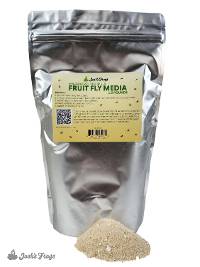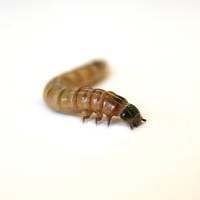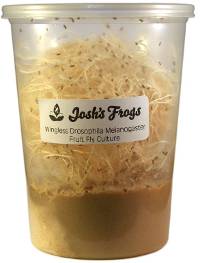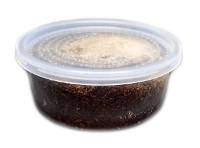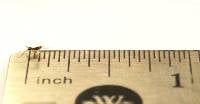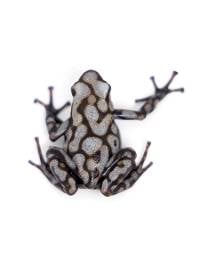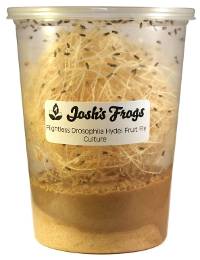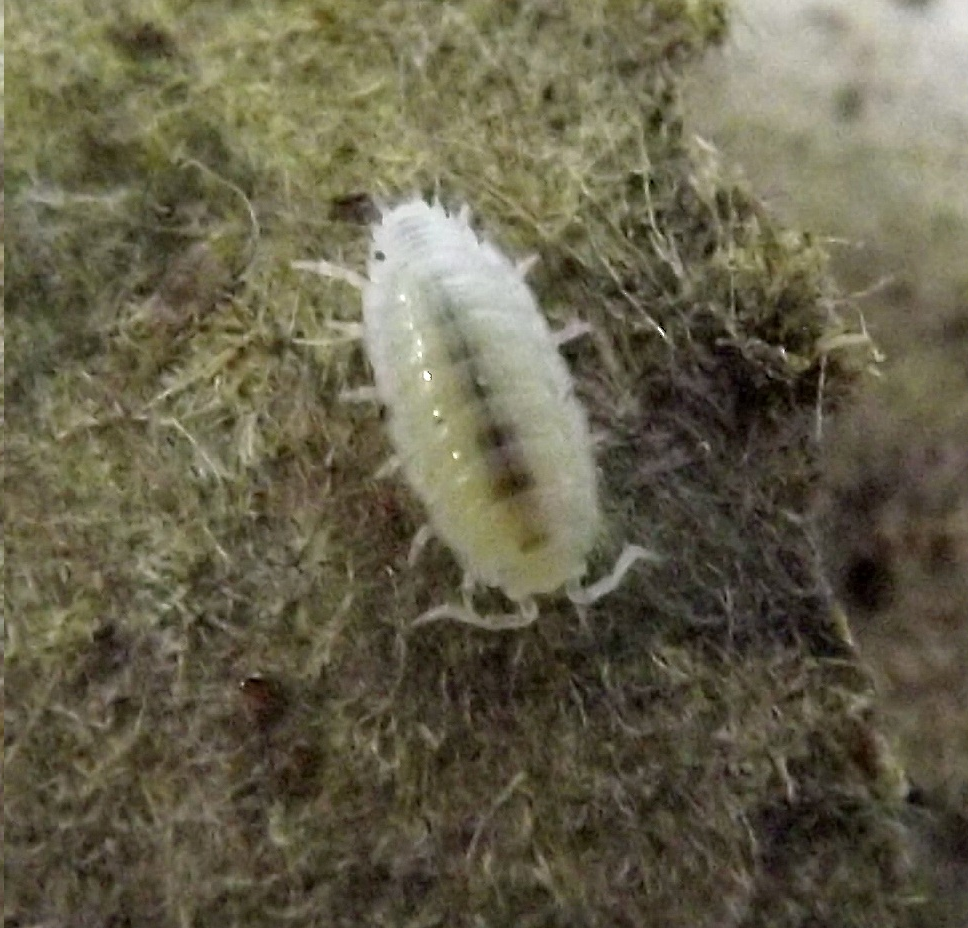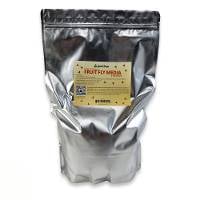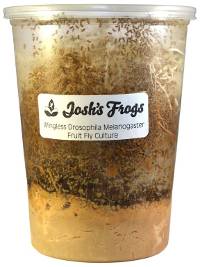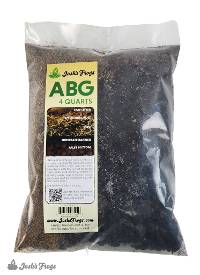Josh's Frogs
Why you should buy from us
Green Mantella - Mantella viridis (Captive Bred)
Green Mantella - Mantella viridis (Captive Bred)
$49.99 0.0 out of 5 stars
(0)
0.0 out of 5 stars
(0)About This Product
Defining Characteristics:
- Captive Bred to Support Conservation. Josh's Frogs donates $5 to Association Mitsinjo for every mantella sold. This partnership helps directly conserve mantella populations in the wild.
- Great Beginner Frog
- Bright Green Coloration develops as Mantella ages
- Bold
- Easy to Keep
- Moderate Trilling Call
- Small
- Can be Kept in Groups
- Challenging to Breed
Name: Mantella viridis is commonly called the green mantella in the hobby. Occasionally, Mantella viridis is referred to as the lime mantella or the green golden frog. In the past, green mantellas have been imported and sold under various other common names, apparently created by wholesalers, which are no longer in use.
Recommended Vivarium Size: Housing Green mantellas can be very simple. A 10 gallon aquarium can house several individuals, while an Exo Terra Glass Terrarium with a footprint of 18x18 or larger could house 4-6 green mantellas. Green mantellas seem to be completely passive with each other for the most part (outside of the breeding season) and do great in groups.
A screen top with daily mistings will maintain the perfect balance of ventilation and humidity. Substrate recommendations vary considerably, but coconut fiber and long fiber sphagnum moss work well for Josh’s Frogs. Alternatively, you can set up a vivarium using Josh’s Frogs naturalistic vivarium substrates, similar to keeping dart frogs. Provide items for your green mantellas to hide under, such as a cork bark flat or leaf litter. Your Mantella viridis will spend much of the time hiding under such objects. A shallow water bowl should be provided, as well and should be cleaned daily. Green mantellas are not particularly arboreal, but they will appreciate a small bit of vivarium wood or live terrarium plants to climb on.
Lighting is for any live plants provided, and not required by green mantellas. There is no evidence that Mantella viridis benefit from UVB lighting, but a low level UV bulb, such as a 2.0 UVB bulb, may be beneficial. Based on observations of green mantellas being active during the day in the wild in partiall sunlight, a low level UVB source would probably be a good idea and is what Josh's Frogs uses on ours.
Temperature: They are ideally kept at about room temperature, in the low to mid 70s. Unlike many other mantellas, green mantellas stress easily in hot temperatures over 80F. Avoid warmer temperatures at all cost.
Humidity: Green mantellas can handle a wide range of humidity levels, but prefer a humidity level of 60-70%. Routine spraying and a full screen top will aid in providing proper humidity levels. Be sure to provide a shallow water dish so that your green mantellas will not dry out in lower humidity. During the breeding season, green mantellas can experience humidty levels of 80% without issue.
Size: Adult green mantellas are not very large, and there is a small size different between males and females. An adult male may reach about 1 inch, but most will be closer to 3/4 of an inch. A large female will be a bit larger and much bulkier (or 'pear shaped') than a male, and may measure up to 1.25”. All of the Mantella viridis froglets Josh's Frogs sells are well started juveniles, and measure approximately .5 - .75” long.
Age: There is not any good data surrounding the average lifespan of green mantellas, but wild caught animals have lived in captivity for over 5 years. All Green Mantellas for sale at Josh's Frogs are well started juveniles, and are 2-3 months old. Keep in mind, at this age froglets may have very different color and patterns than they will as adults.
Feeding: Green mantellas are microphagus, meaning that they consume small food items. Mantella viridis do quite well on easily procured prey items in captivity. At Josh’s Frogs, we feed our adult green mantellas primarily hydei fruit flies, as well as springtails, isopods, extra small phoenix worms, and 1/8 inch crickets. Young green mantellas start life feeding on baby springtails. At the size Josh’s Frogs sells captive bred Mantella viridis, they are eating melanogaster fruit flies and 1/8" crickets. All prey items should be dusted with a quality vitamin/mineral supplement.
Sexing: Sexing adult green mantellas can be fairly straightforward once they're older, but can be difficult on younger animals. Once the mantellas are about 10-12 months old, they display obvious sexual dimorphism. Females are about 1/5 times larger then males, and much more rotund. Males are smaller, more slender, and typically call when kept in a wet or more humid environment. Reportedly, male green mantellas tend to be more skittish than females. A green mantella’s call resembles that of a canary, and is very melodious.
Color/Pattern: Adult green mantellas are primarily green, sometimes with a bit of yellow. 2 color phases seem to occur - it is possible these are 2 separate populations in the wild, and possibly will be classified as different species or subspecies in the future. At Josh's Frogs, we work with the bright green/teal variety. Most individuals have a black partial facemask, and a black/dark brown belly with blue/white blotches. A trademark of the species is a horseshoe shaped bit of color on the throat area, which traces the lower jaw. Younger green mantellas can range from yellow to brown to almost red, with a darker X pattern on their back. Juvenile Mantella viridis will achieve adult coloration at 8-12 months of age.
Social Behavior: These frogs are generally well behaved in groups, but adult females can fight with each other during breeding season. Keeping a group in a large enough vivarium with plenty of visual barriers tends to negate this behavior. Overall, Mantella viridis is a great group frog.
Breeding: Breeding Green Mantellas can be a bit challenging. In our experience, patience is key, as is a decent sized group that is female heavy. At Josh's Frogs, we managed to produce several healthy clutches with a group of 1.5 (1 male, 5 females). Cycling is important. We reduced mistings by half to allow the mantella habitat to dry out a bit, ensuring clean water was always available to the animals in a shallow water dish during this time. Feeding was reduced by about half as well. This artificial dry season was maintained for 3-4 months, followed by a 6 month return to daily misting and heavy feeding. Within a few days of more frequent mistings, the male could be heard calling.
Less than 2 weeks into the artificial rainy season, an egg clutch of approximately 40 eggs was discovered under a piece of cork, buried about 1" into the long fiber sphagnum moss substrate. 2-3 of the females in the group produced eggs, and we were able to get about 10 clutches this season. Eggs are removed and kept on damp sphagnum until they hatch and small, white/gray tadpoles are seen squirming through the egg jelly. Water is then added to the container, flooding the egg clutch and allowing the tadpoles to swin free.
After a few days, the tadpoles are removed with a turkey baster and placed in an aged 20H aquarium with undergravel and sponge filters. At 74F, green mantella tadpoles will eagerly consume a wide variety of foods, from brine shrimp flake to Repashy Savory Stew. After 6-8 weeks, they will develop limbs and begin to leave the water.
Newly morphed green mantellas will quickly consume springtails and grow very fast.
Natural Range: Mantella viridis is limited to a very small area in the northern tip of Madagascar. In the wild, it can be found in very limited localities in dry forest, generally around gently flowing streams with plenty of cover along the banks. With the natural range of green mantellas so limited, habitat destruction is quickly reducing their numbers in the wild.
History in the Hobby: Green mantellas have been available as wild caught animals since the early 1990s, but captive bred animals remain rare. Unfortunately, most imports were doomed in captivity due to primative importation and shipping methods, as well as a lack of general knowledge surrounding their care. This species is no longer exported in large numbers from Madagascar legally for the pet trade, as it has been classified as endangered.
Links of Interest:
IUCN Redlist article for Mantella viridis
Great pictures of the Green Mantella from ARKive
Wikipedia article on Green Mantellas. Poor information, but a great picture of the yellow/brown phase.
Mantella FAQ by Marc Staniszewski, the leading mantella expert in the UK.
Mantella viridis Care by Devin Edmonds of Amphibiancare.com
Still not sure if Mantella viridis from Josh's Frogs are the right pet frog for you? Read the reviews below and see what other customers are saying! Then, make sure to check out our Green Mantella Care Sheet!
Shipping
After placing an order containing a live animal, you will receive a scheduling email containing our JotForm scheduling link to schedule your new pet's delivery date.
With this scheduling link, you will be able to schedule your order's delivery up to 30 days in advance. You will be able to choose a date of delivery for Tuesday-Saturday (Saturday arrival depends on the carrier's service availability) with the estimated time of arrival generally being 12pm, or 4:30pm for more rural areas. Overnight lows must be above 40°F to ship directly to you (or above 30°F for FedEx Ship Center pickups) as well as below 90°F by estimated time of arrival.
If you require further assistance, or prefer to talk to one of our Customer Service agents, please feel free to reach out to our [email protected] email or our phone line 1-800-691-8178.
Other Customers Also Bought
Customer Reviews
0.0 out of 5 stars
Review data
5 star reviews
- 0%
4 star reviews
- 0%
3 star reviews
- 0%
2 star reviews
- 0%
1 star reviews
- 0%


